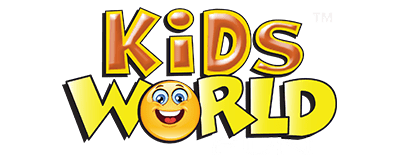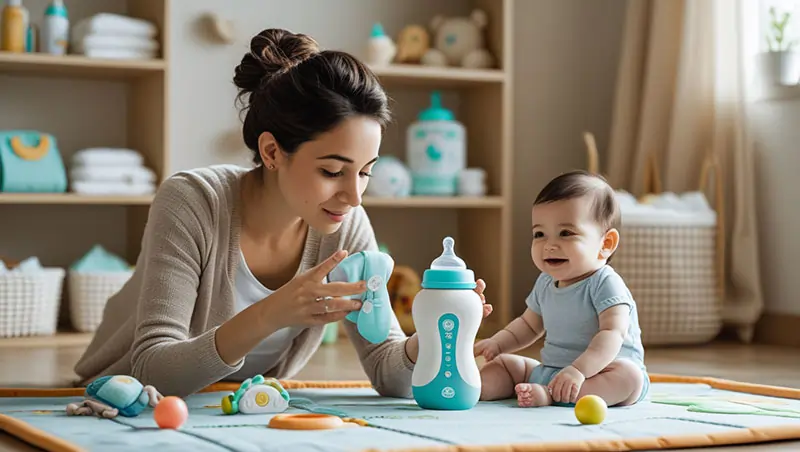The Hidden Details in Baby Products That Parents Actually Notice
When it comes to our children, every detail matters.
Becoming a parent changes everything. You’re suddenly analyzing labels and ingredients in baby products like never before. For new parents, the vast array of options;
- Diapers,
- Wipes,
- Bottles and more can be overwhelming.
Ultimately, what influences a parent’s trust in a product goes beyond the front label.
Parents are increasingly observant and educated. They can easily notice details like a baby wipe texture or the tone of product descriptions. Parents need to know some of the elements that signal care, transparency, and quality.
Key Takeaways
- Clear or transparent ingredient list.
- Functional, easy, and safe food packaging.
- Precise or respectful brand language.
- Durability and softness in the texture.
- Eco-friendly packaging.
- Authentic online surveys.
- Visible warnings for any allergen.
- Securely printed expiration dates.
10 Hidden Details in Baby Products That Parents Must Know
Let’s look at the important things that parents notice but often overlook. We will discuss why these things are significant.
1. Transparency of Ingredients
Parents now closely monitor product ingredient lists. This is because of the growing concerns about toxins, allergens, and hormone-disrupting chemicals. They prioritize understanding what’s in a product over marketing claims. Words like “parfum” or “fragrance” raise concerns as they may hide unknown synthetic chemicals.
What parents want to see:
- No parabens, phthalates, or sulfates
- Plant-based ingredients
- Hypoallergenic or dermatologist-tested certifications
- Transparent sourcing of ingredients (e.g., “organic shea butter from Ghana”)
Brands that explain their ingredients build consumer trust. Transparency is now an expectation.
2. Product Packaging That Expresses the Quality
Packaging is often overlooked in baby products. But its functionality, safety, and sustainability are crucial to today’s parents. The design that matters, from easy-to-open baby food packaging to leak-proof lotion bottles for diaper bags.
What parents want to see:
- BPA-free containers
- Tamper-proof seals
- Resealable lids
- Minimal, recyclable packaging
- Clear “use-by” or “opened on” labels
Intuitive, clean, and safe packaging conveys that a brand values a parent’s time and concern for their child’s health. For baby food, ease of use, portion control, and environmental impact are key considerations.
3. Brand’s Selling Tone or Language
Parents pay attention to the tone of voice in baby product labels and websites. Overly casual language can confuse parents. At the same time, excessively clinical or alarmist language can create anxiety.
What parents want to see:
- Calm,
- Clear,
- Informative and understandable communication.
Parents appreciate brands that act as knowledgeable partners rather than salespeople. Though, especially when they offer helpful parenting tips or relatable humor about the journey of raising a baby.
4. The Product’s Touching Feel and Texture
Touch is crucial in a baby’s world. A product’s texture can make it a favorite or cause it to be discarded after one use. Consider baby wipes: Are they soft and durable? Or think about lotion: Is it greasy or fast absorbing?
Texture provides immediate feedback, reassuring parents or raising concerns. Great product design considers real-life feelings, not just lab results.
5. The Product’s Scent
Scent is highly personal and controversial for babies. Some parents enjoy lightly scented lotions or shampoos. Whereas others prefer to avoid added fragrances due to allergies or sensitivities.
What parents want to see:
- “Fragrance-free” products are often preferred for newborns and infants with eczema or dry skin.
- If scents are used, they should be subtle, like chamomile or coconut.
- Artificial candy-like scents are generally undesirable.
Scent influences perceptions of cleanliness and freshness. Parents often link “no scent” to safety and purity, particularly in baby food, wipes, and skin care.
6. Eco-Friendly Practices
Modern parents are increasingly environmentally conscious. They might be considering not a product’s function but also its manufacturing process. They seek brands that show care for the planet their children will inherit.
What parents want to see:
- Refillable containers
- Compostable baby wipes
- Certified organic materials
- Cruelty-free testing
- Minimal use of plastics
- Carbon-neutral shipping
Some parents check a brand’s sustainability report or values before buying. This allows them to ensure their money supports ethical practices.
7. Company’s Online Surveys, Reviews, or Reputation
Parents want to see surveys or online reviews about the product. Online reviews, social media, and parenting forums heavily influence buying decisions. A product may appear perfect, but negative feedback from other parents can quickly change perceptions.
What parents want to see:
- Clinical trial results
- Honest testimonials
- Customer service responsiveness
- Before-and-after photos
Brands that acknowledge their mistakes and handle recalls transparently build long-term loyalty. Its products and communication regarding errors shape a brand’s reputation.
8. Allergen Labels List
Every label serves as a safety guide for parents of children with allergies. Products labeled “nut-free,” “soy-free,” “dairy-free,” or “gluten-free” earn points for clarity.
What parents want to see:
- Clearly display allergen warnings.
- Visible indicators, along with cross-contamination warnings and preparation instructions.
9. Mainly Features Like Durability or Storage
Busy parents need easy-to-travel baby products that cut mess and complexity. Convenience-driven design is essential.
What parents want to see:
- Leak-proof lids
- Travel-sized packs
- Clip-on dispensers
- Dual-purpose designs (like diaper caddies with built-in wipe holders)
- Stackable containers
Parents appreciate products designed with real-life parenting in mind, signaling a brand that understands its audience.
10. Information Like Expiration Dates
Parents frequently check expiration dates on food, lotions, shampoos, medicines, and diapers. Clear “best by” and “manufactured on” dates help plan usage and minimize waste, while batch numbers are essential for recalls and safety concerns.
Brands that make information easy to find earn trust. If parents have to search too hard, frustration increases and confidence falls.
Related reading: Tips For Choosing Safe Baby Products
Conclusion:
In the crowded baby products market, flashy labels and marketing claims fall flat. Today’s parents are informed and observant. They notice everything from packaging design to product descriptions.
Brands that stand out respect modern parents’ intelligence and intuition. By focusing on details, they create better products and build trust with families.

